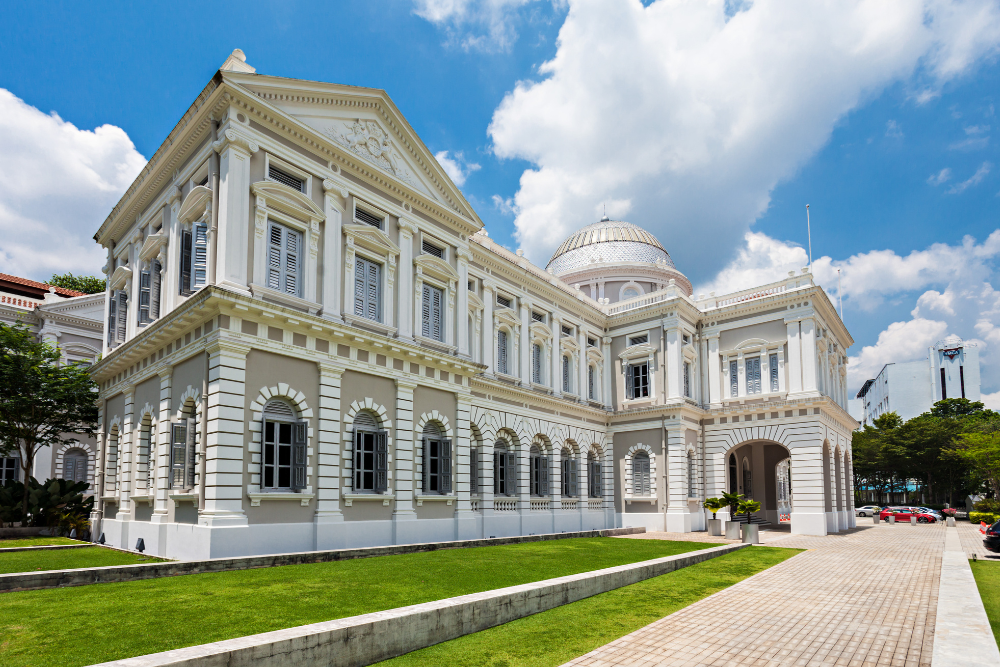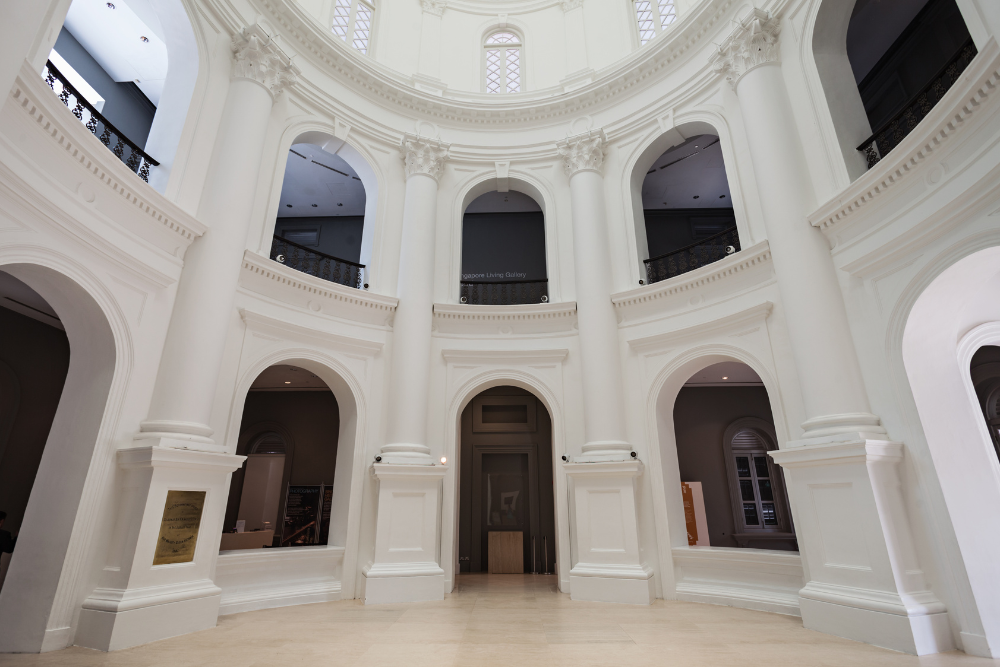Peranakan culture, a vibrant blend of Chinese and Malay influences, is one of the most unique and fascinating cultural traditions in Singapore. The Peranakans, often referred to as Straits Chinese, are descendants of Chinese immigrants who married local Malays, resulting in a fusion of traditions, languages, cuisine, and art. Singapore, with its rich multicultural heritage, offers a wealth of opportunities to explore and understand Peranakan culture, from traditional clothing and cuisine to distinctive art forms and heritage sites.
Here’s a guide to discovering the Peranakan culture in Singapore.
1. Peranakan Museum

Best for: A deep dive into Peranakan heritage, art, and history
Location: 39 Armenian Street
The Peranakan Museum is the best place to start your journey into the Peranakan culture. Housed in a beautifully restored building, the museum offers an immersive experience of the Peranakan way of life. Through its rich collection of artifacts, exhibitions, and interactive displays, visitors can learn about the customs, clothing, cuisine, and rituals of the Peranakan community.
- Highlights:
- Traditional Clothing: Admire the intricately embroidered kebayas (blouses) and sarongs, which are colorful and elaborately designed garments worn by Peranakan women.
- Artifacts and Ceramics: The museum showcases fine porcelain, jewelry, and ornate furniture that reflect the Peranakan’s love for intricate and decorative items.
- Marriage and Family Traditions: Exhibits also delve into the Peranakan marriage customs, rituals, and the blending of Chinese and Malay cultural practices.
Why Visit: This museum is the heart of Peranakan history in Singapore and offers a thorough understanding of the culture’s evolution and influence.
2. Kampong Glam and Haji Lane

Best for: Exploring Peranakan heritage in the heart of Singapore
Location: Kampong Glam
The Kampong Glam area is one of Singapore’s oldest districts and is home to the Malay community, but it’s also historically connected to the Peranakan people. The Peranakan influence is still visible today in the architecture, shops, and vibrant street art that decorate the neighborhood.
- Highlights:
- Shophouses: Stroll down Haji Lane and surrounding areas to admire the well-preserved Peranakan-style shophouses. These buildings typically feature colorful tiles, intricate wooden carvings, and large windows.
- Sultan Mosque: While not specifically Peranakan, the nearby Sultan Mosque provides a cultural and historical backdrop to the area. Many Peranakans lived here during the 19th and 20th centuries, blending Malay and Chinese elements in their daily lives.
- Cafés and Boutiques: A number of shops along Arab Street and Haji Lane sell Peranakan-inspired clothing, jewelry, and handicrafts, offering a more contemporary take on traditional designs.
Why Visit: Kampong Glam offers an authentic and lively experience of Peranakan culture, blending heritage with modern-day fashion and art.
3. Nyonya Cuisine

Best for: A sensory experience of Peranakan food
Where to Try: Candlenut, The Blue Ginger, or Nyonya eateries in Chinatown
Food is one of the most vibrant aspects of Peranakan culture, and Nyonya cuisine—a unique fusion of Malay and Chinese flavors—is an absolute must-try. Nyonya food is known for its bold and aromatic flavors, including the use of spices, herbs, and local ingredients.
- Popular Dishes:
- Laksa: A flavorful noodle soup with a spicy, coconut milk-based broth, often served with prawns or chicken.
- Ayam Buah Keluak: A slow-braised chicken dish made with the distinctive black nuts known as buah keluak, which is unique to Peranakan cuisine.
- Kueh: Colorful and sweet bite-sized treats, such as kueh lapis (layered cake) and ondeh-ondeh (glutinous rice balls filled with palm sugar).
Where to Eat:
- Candlenut: The world’s first Michelin-starred Peranakan restaurant, Candlenut offers an upscale take on traditional dishes.
- The Blue Ginger: A long-time favorite, this restaurant serves up hearty and flavorful Nyonya dishes in a warm and inviting atmosphere.
- Chinatown: Head to the Chinatown Food Street, where you’ll find casual eateries serving up traditional Peranakan dishes.
Why Try It: Nyonya cuisine is an essential part of the Peranakan experience—its vibrant flavors and use of fresh ingredients offer a true taste of cultural fusion.
4. Peranakan Craft and Art

Best for: Souvenirs, traditional crafts, and artistic exploration
Where to Find It: Peranakan shopfronts in Chinatown, Katong, and Joo Chiat
Peranakan culture has left an indelible mark on Singapore’s arts and crafts scene, and you can find beautiful, handmade items that reflect the intricate artistry of the community. Peranakan beadwork, embroidered textiles, and decorative ceramics are some of the standout art forms.
- Highlights:
- Beadwork and Embroidery: Traditional Peranakan clothing, such as the kebaya and sarong, are adorned with intricate beadwork and hand-embroidered designs. You can find these beautiful items in specialty stores or local boutiques.
- Peranakan Pottery: The unique and colorful ceramics of the Peranakans are prized for their intricate designs and bright colors. You’ll find decorative bowls, vases, and dinnerware reflecting these beautiful crafts.
- Textile and Fabric: Look for batik fabrics and traditional Peranakan clothing at local shops or during cultural festivals.
Where to Find It: Visit local markets in Chinatown, Katong, and Joo Chiat for authentic Peranakan-inspired arts and crafts. You’ll find boutique shops with embroidered scarves, homeware, and more.
Why Visit: These crafts provide a lasting connection to the Peranakan culture and make for excellent souvenirs that carry the beauty of tradition and heritage.
5. Katong and Joo Chiat

Best for: Peranakan architecture, local eateries, and traditional lifestyles
Location: Katong and Joo Chiat
Both Katong and Joo Chiat are neighborhoods in Singapore with a strong Peranakan presence, offering a glimpse into the daily lives and traditions of the Peranakan people. This area is known for its charming shophouses, traditional eateries, and strong Peranakan heritage.
- Highlights:
- Shophouses and Architecture: The pastel-colored Peranakan shophouses that line the streets of Katong and Joo Chiat are some of the best examples of this architectural style. The intricate tile work, wooden carvings, and decorative motifs reflect the cultural fusion that characterizes the Peranakan lifestyle.
- Traditional Peranakan Eateries: The area is home to some of the best local spots for Nyonya cuisine, with family-run restaurants and cafes offering authentic, home-cooked meals.
- Cultural Heritage: Walk around these neighborhoods to experience a slower pace of life while enjoying the charm and character of Singapore’s Peranakan history.
Why Visit: Katong and Joo Chiat are perfect for those who want to explore a neighborhood steeped in Peranakan culture and enjoy authentic Nyonya food and traditional architecture.
Conclusion
Peranakan culture is an integral part of Singapore’s identity, offering a fascinating fusion of Chinese and Malay traditions. Whether you’re exploring the beautiful textiles and beadwork, indulging in the flavorful Nyonya cuisine, or wandering through the vibrant neighborhoods of Kampong Glam, Katong, and Joo Chiat, the Peranakan legacy is alive and well. For a deeper understanding, the Peranakan Museum is an essential stop, providing insight into the history, customs, and unique art forms of this community. Embrace the richness of this culture and take home a piece of Singapore’s Peranakan heritage.












